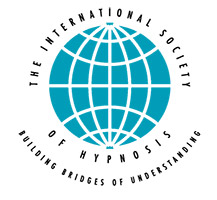
Failure Stress Management
Stress is a term in psychology and biology, borrowed from physics and engineering and first used in the biological context in the 1930s, which has in more recent decades become commonly used in popular parlance. It refers to the consequence of the failure of an organism - human or other animal - to respond adequately to mental, emotional, or physical demands, whether actual or imagined. When the person perceives a threat, their nervous system responds by releasing a flood of stress hormones, including adrenaline and cortisol. These hormones rouse the body for emergency action. The stress response is the body’s way of protecting the person. When working properly, it helps in staying focused, energetic, and alert.
The term stress was first employed in a biological context, the concept to include inadequate physiological response to any demand. Stress refers to a condition and stressor to the stimulus causing it. It covers a wide range of phenomena, from mild irritation to drastic dysfunction that may cause severe health breakdown.
Symptoms :
Signs of stress may be cognitive, emotional, physical, or behavioral.
Cognitive symptoms
• Memory problems
• Inability to concentrate
• Poor judgment
• Seeing only the negative
• Anxious or racing thoughts
• Constant worrying
Emotional symptoms
• Moodiness
• Irritability or short temper
• Agitation, inability to relax
• Feeling overwhelmed
• Sense of loneliness and isolation
• Depression or general unhappiness
Physical symptoms
• Aches and pains
• Diarrhea or constipation
• Nausea, dizziness
• Chest pain, rapid heartbeat
• Loss of sex drive
• Frequent colds
• Chest pains
Behavioural symptoms
• Eating more or less
• Sleeping too much or too little
• Isolating yourself from others
• Procrastinating or neglecting responsibilities
• Using alcohol, cigarettes, or drugs to relax
• Nervous habits (e.g. nail biting, pacing)
Models
General adaptation syndrome
Physiologists define stress as how the body reacts to a stressor, real or imagined, a stimulus that causes stress. Acute stressors affect an organism in the short term; chronic stressors over the longer term.
Effects of stress :
Alarm is the first stage. When the threat or stressor is identified or realized, the body's stress response is a state of alarm. During this stage, adrenaline will be produced in order to bring about the fight-or-flight response. There is also some activation of the HPA axis, producing cortisol.
Resistance is the second stage. If the stressor persists, it becomes necessary to attempt some means of coping with the stress. Although the body begins to try to adapt to the strains or demands of the environment, the body cannot keep this up indefinitely, so its resources are gradually depleted.
Exhaustion is the third and final stage in the GAS model. At this point, all of the body's resources are eventually depleted and the body is unable to maintain normal function. The initial autonomic nervous system symptoms may reappear (sweating, raised heart rate, etc.). If stage three is extended, long-term damage may result, as the body's immune system becomes exhausted, and bodily functions become impaired, resulting in decompensation.
The result can manifest itself in obvious illnesses such as ulcers, depression, diabetes , trouble with the digestive system, or even cardiovascular problems, along with other mental illnesses.
, trouble with the digestive system, or even cardiovascular problems, along with other mental illnesses.
Eustress and distress
Where stress enhances function (physical or mental, such as through strength training or challenging work), it may be considered eustress. Persistent stress that is not resolved through coping or adaptation, deemed distress, may lead to anxiety or withdrawal (depression) behavior.
The difference between experiences that result in eustress and those that result in distress is determined by the disparity between an experience (real or imagined) and personal expectations, and resources to cope with the stress. Alarming experiences, either real or imagined, can trigger a stress response.
Cognitive appraisal model
In order for a psychosocial situation to be stressful, it must be appraised as such. Cognitive processes of appraisal are central in determining whether a situation is potentially threatening, constitutes a harm/loss or a challenge, or is benign.
Both personal and environmental factors influence this primary appraisal, which then triggers the selection of coping processes. Problem-focused coping is directed at managing the problem, whereas emotion-focused coping processes are directed at managing the negative emotions. Secondary appraisal refers to the evaluation of the resources available to cope with the problem, and may alter the primary appraisal.
In other words, primary appraisal includes the perception of how stressful the problem is and the seconday appraisal of estimating whether one has more than or less than adequate resources to deal with the problem that affects the overall appraisal of stressfulness. Further, coping is flexible in that, in general, the individual examines the effectiveness of the coping on the situation; if it is not having the desired effect, s/he will, in general, try different strategies.
Neurochemistry and physiology
Although the basic neurochemistry of the stress response is now well understood, much remains to be discovered about how the components of this system interact with one another, in the brain, and throughout the body. In response to a stressor, neurons with cell bodies in the paraventricular nuclei (PVN) of the hypothalamus secrete corticotropin-releasing hormone (CRH) and arginine-vasopressin (AVP) into the hypophyseal portal system.
The locus ceruleus and other noradrenergic cell groups of the adrenal medulla and pons, collectively known as the LC/NE system, also become active and use brain epinephrine to execute autonomic and neuroendocrine responses, serving as a global alarm system.
The autonomic nervous system provides the rapid response to stress commonly known as the fight-or-flight response, engaging the sympathetic nervous system and withdrawing the parasympathetic nervous system, thereby enacting cardiovascular, respiratory, gastrointestinal, renal, and endocrine changes. The HPA axis, a major part of the neuroendocrine system involving the interactions of the hypothalamus, the pituitary gland, and the adrenal glands, is also activated by release of CRH and AVP.
This results in release of adreno-cortico-tropic hormone (ACTH) from the pituitary into the general bloodstream, which results in secretion of cortisol and other gluco-corticoids from the adrenal cortex. The related compound cortisone is frequently used as a key anti-inflammatory component in drugs that treat skin rashes and in nasal sprays that treat asthma and sinusitis. Recently, scientists realized the brain also uses cortisol to suppress the immune system and reduce inflammation within the body. These corticoids involve the whole body in the organism's response to stress and ultimately contribute to the termination of the response via inhibitory feedback.
Impact on disease
Chronic stress can significantly affect many of the body's immune systems, as can an individual's perceptions of, and reactions to, stress. The term psycho-neuro-immunology is used to describe the interactions between the mental state, nervous and immune systems, and research on the interconnections of these systems. Immune system changes can create more vulnerability to infection, and have been observed to increase the potential for an outbreak of psoriasis for people with that skin disorder.
Chronic stress has also been shown to impair developmental growth in children by lowering the pituitary gland's production of growth hormone, as in children associated with a home environment involving serious marital discord, alcoholism, or child abuse.
Chronic stress is seen to affect parts of the brain where memories are processed through and stored. When people feel stressed, stress hormones get over-secreted, which affects the brain. This secretion is made up of glucocorticoids, including cortisol, which are steroid hormones that the adrenal gland releases.
Studies of female monkeys discovered that individuals suffering from higher stress have higher levels of visceral fat in their bodies. This suggests a possible cause-and-effect link between the two, wherein stress promotes the accumulation of visceral fat, which in turn causes hormonal and metabolic changes that contribute to heart disease and other health problems.
Post traumatic stress disorder
Post traumatic stress disorder (PTSD) is a severe anxiety disorder that can develop after exposure to any event that results in psychological trauma. This event may involve the threat of death to oneself or to someone else, or to one's own or someone else's physical, sexual, or psychological integrity, overwhelming the individual's ability to cope. As an effect of psychological trauma, PTSD is less frequent and more enduring than the more commonly seen acute stress response. Diagnostic symptoms for PTSD include re-experiencing the original trauma(s) through flashbacks or nightmares, avoidance of stimuli associated with the trauma, and increased arousal – such as difficulty falling or staying asleep, anger, and hypervigilance. Formal diagnostic criteria require that the symptoms last more than one month and cause significant impairment in social, occupational, or other important areas of functioning.
Common sources
Both negative and positive stressors can lead to stress. The intensity and duration of stress changes depending on the circumstances and emotional condition of the person suffering from it. Some common categories and examples of stressors include:
Sensory input such as pain, bright light, noise, temperatures, or environmental issues such as a lack of control over environmental circumstances, such as food, air and/or water quality, housing, health, freedom, or mobility.
Social issues can also cause stress, such as struggles with conspecific or difficult individuals and social defeat, or relationship conflict, deception, or break ups, and major events such as birth and deaths, marriage, and divorce.
Life experiences such as poverty, unemployment, clinical depression, obsessive compulsive disorder, heavy drinking, or insufficient sleep can also cause stress. Students and workers may face performance pressure stress from exams and project deadlines.
Adverse experiences during development (e.g. prenatal exposure to maternal stress, poor attachment histories, sexual abuse) are thought to contribute to deficits in the maturity of an individual's stress response systems. One evaluation of the different stresses in people's lives is the Holmes and Rahe stress scale.
Stress tests
Measuring stress level independent of differences in people's personalities has been inherently difficult: Some people are able to process many stressors simultaneously, while others can barely address a few. Such tests as the Trier Social Stress Test attempted to isolate the effects of personalities on ability to handle stress in a laboratory environment. Other psychologists, however, proposed measuring stress indirectly, through self-tests.
Because the amount of stressors in a person's life often (although not always) correlates with the amount of stress that person experiences, researchers combine the results of stress and burnout self-tests. Stress tests help determine the number of stressors in a person's life, while burnout tests determine the degree to which the person is close to the state of burnout. Combining both helps researchers gauge how likely additional stressors will make him or her experience mental exhaustion.
Adaptation
Responses to stress include adaptation, psychological coping such as stress management, anxiety, and depression. Over the long term, distress can lead to diminished health and/or increased propensity to illness; to avoid this, stress must be managed.
Stress management encompasses techniques intended to equip a person with effective coping mechanisms for dealing with psychological stress, with stress defined as a person's physiological response to an internal or external stimulus that triggers the fight-or-flight response. Stress management is effective when a person uses strategies to cope with or alter stressful situations.
There are several ways of coping with stress, such as controlling the source of stress or learning to set limits and to say "No" to some demands that bosses or family members may make.
A person's capacity to tolerate the source of stress may be increased by thinking about another topic such as a hobby, listening to music, or spending time in a wilderness.
Stress management
Stress management is the alteration of stress and especially chronic stress often for the purpose of improving everyday functioning.
Stress produces numerous symptoms which vary according to persons, situations, and severity. These can include physical health decline as well as depression. The process of stress management is one of the keys to a happy and successful life in modern society. Although life provides numerous demands that can prove difficult to handle, stress management is the best way to manage anxiety and maintain overall well-being.
In order to develop an effective stress management program it is first necessary to identify the factors that are central to a person controlling his/her stress, and to identify the intervention methods which effectively target these factors. The interpretation of stress focuses on the transaction between people and their external environment (known as the Transactional Model). The model contends that stress may not be a stressor if the person does not perceive the stressor as a threat but rather as positive or even challenging. Also, if the person possesses or can use adequate coping skills, then stress may not actually be a result or develop because of the stressor. The model proposes that people can be taught to manage their stress and cope with their stressors. They may learn to change their perspective of the stressor and provide them with the ability and confidence to improve their lives and handle all of types of stressors.
Health realization/innate health model
The health realization/innate health model of stress is also founded on the idea that stress does not necessarily follow the presence of a potential stressor. Instead of focusing on the individual's appraisal of so-called stressors in relation to his or her own coping skills (as the transactional model does), the health realization model focuses on the nature of thought, stating that it is ultimately a person's thought processes that determine the response to potentially stressful external circumstances. In this model, stress results from appraising oneself and one's circumstances through a mental filter of insecurity and negativity, whereas a feeling of well-being results from approaching the world with a "quiet mind".
This model proposes that helping stressed individuals understand the nature of thought - especially providing them with the ability to recognize when they are in the grip of insecure thinking, disengage from it, and access natural positive feelings - will reduce their stress.
Techniques
High demand levels load the person with extra effort and work. A new time schedule is worked up, and until the period of abnormally high, personal demand has passed, the normal frequency and duration of former schedules is limited.
Many techniques cope with the stresses life brings. Some of the following ways induce a lower than usual stress level, temporarily, to compensate the biological tissues involved; others face the stressor at a higher level of abstraction:
• Autogenic training
• Social activity
• Cognitive therapy
• Conflict resolution
• Exercise
• Getting a hobby
• Meditation
• Deep breathing
• Yoga Nidra
• Nootropics
• Reading novels
• Prayer
• Relaxation techniques
• Artistic Expression
• Fractional relaxation
• Progressive relaxation
• Spas
• Somatics training
• Spending time in nature
• Stress balls
• Natural medicine
• Clinically validated alternative treatments
• Time management
• Planning and decision making
• Listening to certain types of relaxing music, particularly:
o New Age music
o Classical music
o Psychedelic music
o Christian music
o Sleep Music
• Spending quality time with pets
Techniques of stress management will vary according to the philosophical paradigm.
Measuring stress
Levels of stress can be measured. One way is through the use of psychological testing: the Holmes and Rahe Stress Scale is used to rate stressful life events, while the DASS contains a scale for stress based on self-report items. Changes in blood pressure and galvanic skin response can also be measured to test stress levels, and changes in stress levels. A digital thermometer can be used to evaluate changes in skin temperature, which can activation of the fight-or-flight response drawing blood away from the extremities.
Stress management has physiological and immune benefit effects.
Effectiveness
Positive outcomes are observed using a combination of non-drug interventions:
• treatment of anger or hostility,
• autogenic training
• talking therapy (around relationship or existential issues)
• biofeedback
• cognitive therapy for anxiety or clinical depression








